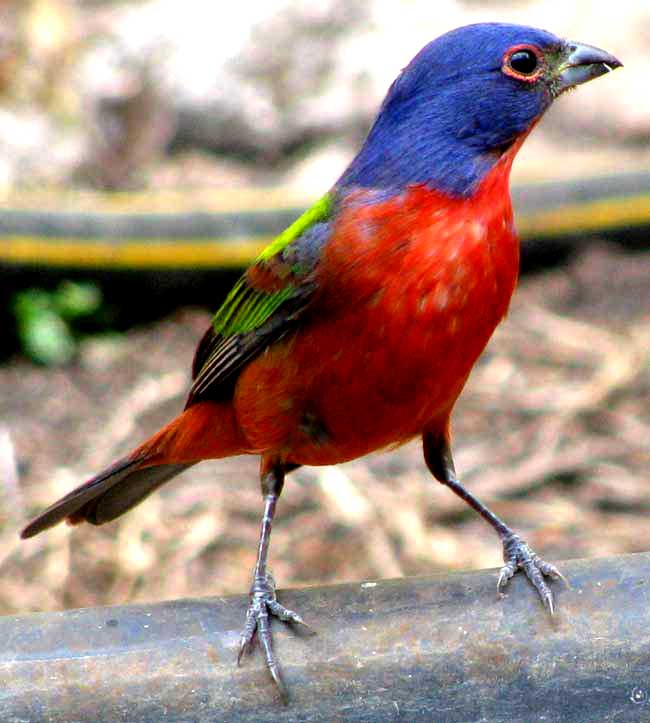
When you're naturalizing, nothing gives a thrill quite like spotting a rare wild plant or animal, such as the Peregrine Falcon, Falco peregrinus, at the right. It's entirely possible, even in a very average backyard, to spot species that are rare.
For example, recently an alert birder saw a hybrid Brewster's Warbler during migration, outside her kitchen window in Nashville, Tennessee, and that certainly qualifies as rare.

The main way most of us learn whether the plants and animals we see are common or rare is by reading what web pages and our field guides say about them. The AllAboutBirds.Org Painted Bunting page describes the Painted Bunting, Passerina ciris, shown at the left, as "fairly common" in its distribution area. However, it adds that especially in Mexico and the Caribbean, where Painted Buntings are caught and sold illegally as cage birds, there's "pressure on their breeding populations."
If you're consulting an older field guide, some species may have altered their numbers since the guide was published. The distribution map for House Finches in the 1966 Golden Birds of North America indicates that the species are completely absent from all of eastern North America except around New York City. Nowadays, House Finches are among the most visible visitors at bird feeders through most of eastern North America.

The same outdated field guide describes the Pileated Woodpecker as "uncommon and local; a wary bird of extensive deciduous and mixed forests." Nowadays throughout its distribution area Pileated Woodpeckers often even turn up in wooded city parks, for they've adapted their behavior to life in suburban areas. Behavioral changes leading to shifts in abundance also has been seen in such species as Whitetail Deer, Coyotes, Opossums, Raccoons, Armadillos and even Mountain Lions.